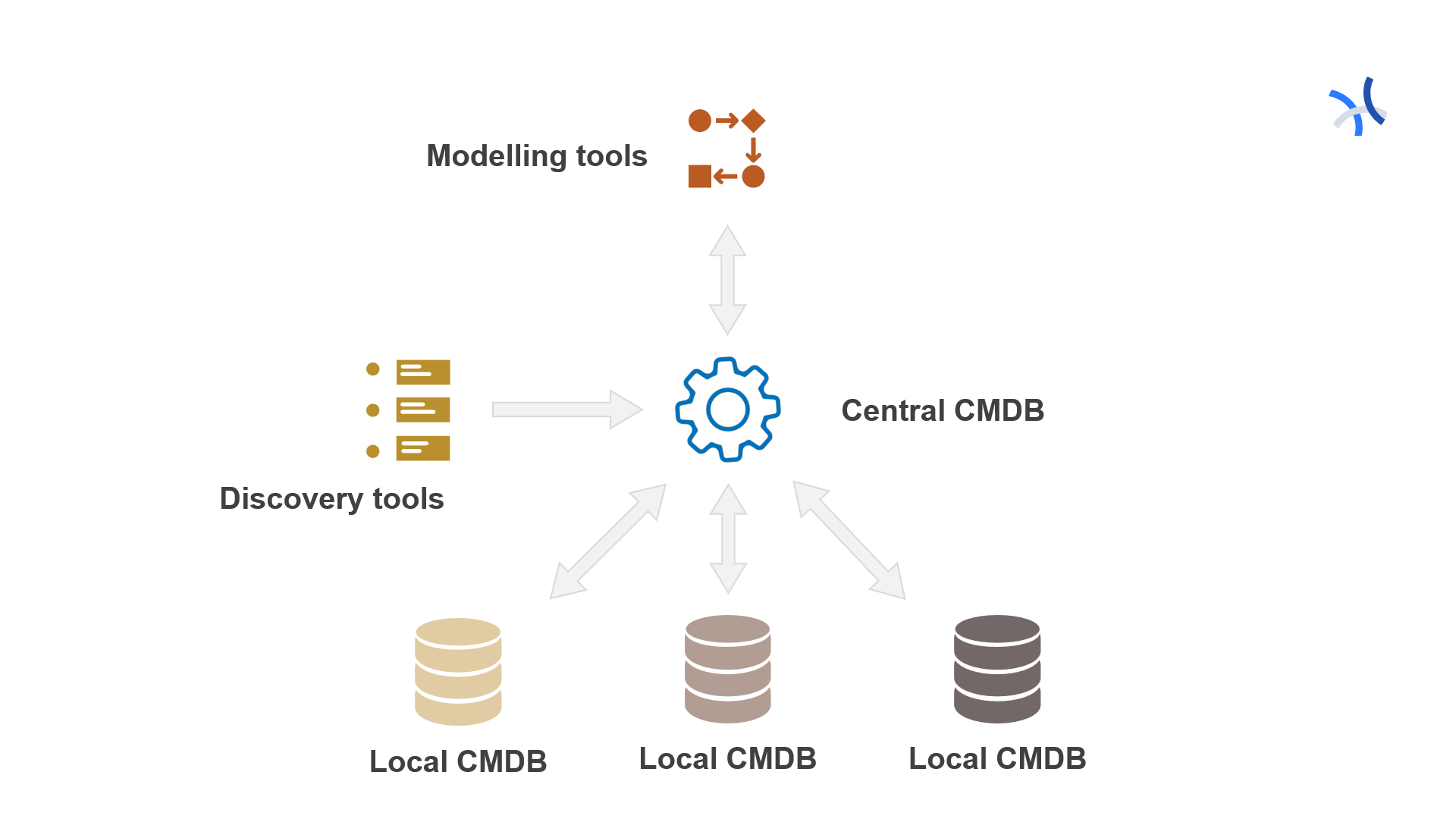Configuration database CMDB ecosystem
We can get closer to the concept of the Configuration Database ecosystem on the example of ObjectGears Configuration Database.

ObjectGears acquires configuration items:
- By manual entry by the user (items that cannot be read automatically - e.g. processes, services).
- Own infrastructure functions (e.g. reading users and servers from MS Active Directory, databases from MS SQL servers, virtual servers from VMware, certificates, etc.)
- By taking over from Discovery tools (e.g. integration with JDisc)
The configuration items can then be sent via the connector to the Sparx Enterprise Architect modeling tool, and the data modeled in this system can then be imported back into ObjectGears. ObjectGears acts as a central CMDB for other integrated systems that function as a local CMDB for the world of applications of a particular manufacturer (e.g. Jira InSight) or a projection system for industry and energy COMOS. If you are interested in the topic, watch the videos: CMDB, Discovery and Sparx Enterprise Architect
…or: Archimate and CMDB
We have seen a solution to the Application configuration item and its lifecycle management context.
Everything we have shown you is implemented in the ObjectGears low code development system. This system is completely free in 25 users’ mode, even for production use. Nothing prevents you from using it. You can start by installing it and trying out the pre-developed functionalities.
You have several functionalities already available in the base package, such as:
When you think about how many Excel-based "applications" you use, which were mostly also created outside of IT, you can see the potential that you have and which you can turn into a full-fledged application with the right tool.
Additional benefits include
-
You don't create shadow IT
Shadow IT is a problem in many organizations where IT doesn't know about user applications. In case of the ObjectGears system, IT maintains, updates and performs back up, but the users themselves can create the necessary applications/modules in it.
By saving information to the ObjectGears system, you can share this data in your other applications (modules). Imagine registering your company cars in the system. You can create a module for renting them, the assistant can have a module for monitoring the technical inspection of individual cars and reporting car breakdown, etc.
If you record company buildings and rooms, then a module can be created on the overview of user locations, room equipment, repair planning, painting. Module to support planned moves.
If you put these agendas into separate applications developed just for this purpose, you will be dealing with the integration problems of many specialized applications.
In ObjectGears system you can share any data.
The ObjectGears system is a web application, so it supports the work of multiple users at the same time. That way, everyone can work and there is no need to send files to each other by email, there are no problems with file locking or too many users accessing one file.
Access to data and functionality based on roles assigned to users is a matter of course. It is not appropriate for users to see all the information you record. According to the Zero Trust policy, you should only grant minimal access to users.
You can make the adjustments yourself with a simple click or by editing scripts.
-
Vendor lock-in - independence from suppliers
By purchasing ObjectGears, you do not become dependent on a software vendor. You can make modifications to your models yourself or use another company or an independent developer with the knowledge of standard technologies SQL and JavaScript.
Leave us your contact and we will be happy to discuss your situation and problems you are solving with you without obligation. You can then easily evaluate for yourself whether the ObjectGears system will be a benefit for you.